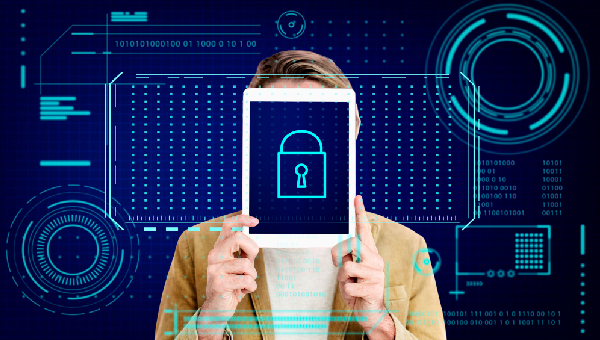Cybersecurity in 2024: Staying Safe in a Digital World

Within the 2024 advanced age, where reliance on innovation is nearly total, cybersecurity has changed from being the concern of IT specialists as it were to a need for people, businesses and governments. With the increasing advancement of cyber threats, every person has to know his or her surroundings and implement measures on how to keep secure online. The article provides an analysis of the existing problems in cybersecurity, the new developments expected in the future and the measures to take as individuals, parents and societies in the year 2024.
The New Class of Attack in 2024
Over the past few years, the changes that cyber threats have experienced are remarkable. The most worrying development is:
Phishing and Social Engineering Attacks
Phishing remains a dominant form of attack in which hackers act under false entities to elicit private information from users. It is basic information for you that it is not the same around the world, in 2024 these attacks have struck to be more and more fraudulent due to advanced data analytics and AI. Cybercrime now has taken advantage of that private, personally identifiable information to target individuals with politically active personalized phishing and other related attacks.
Ransomware Escalation
Ransomware has ended up exceptionally predominant in later a long time and it’s one of the foremost common sorts of malware that locks the records of a casualty until an installment is made to the assailant. In most cases, attackers target organizations, municipalities and even hospitals, bringing about unnecessary chaos. In the year 2024, however, the trend has shifted and ransomware as a collection of organized criminal attacks has emerged as more expensive. Most of the hackers are intimidated by the fact that paying a ransom can be traced because of the popularity of digital currencies.
IoT and Smart Devices Vulnerabilities
As smart home devices, smart wearables, and connected cars that belong to the Internet of Things (IoT) are becoming a mass market, the headway toward criminals has protruded. Several IoT gadgets do not employ security measures that are highly developed which gives a field day for hackers who want to breach networks or instigate Distributed Denial of Service (DDoS) attacks. The year 2024 is projected to be one with a wide acceptance of smart devices. It therefore follows that the protection of such smart devices is one of the priorities.
AI Self-Directed Moving Cyberattacks
AI tools are not limited to protecting against cyberattacks as it is utilized by hackers too. AI has also been integrated with cybercrime making it easier for adversaries. Adversaries currently employ AI for almost all aspects of the hack, including preparing, engaging, phishing emails and looking for penetration points, as well as evading existing countermeasures. In this year 2024, attacks that leverage AI are more sophisticated making it difficult to respond than it was before.
Emerging Trends in Cybersecurity
Due to all these rapid changes and new patterns and trends in cyber threats, the cybersecurity domain has adapted to such dynamic situations effectively. The dissemination of numerous and assist in safeguarding the individual and their entities from the risks available in 2024, and some of the key trends are as follows:
Zero Trust Architecture
The zero trust security model accepts that it is normal for any of the users of the application or service, no matter whether they are inside the network or outside it, to be untrusted. In 2024, organizations are implementing an increasing number of zero-trust models to decrease the likelihood of unauthorized access and insider threats. This mitigates the risk of data leaks by verifying every user, even the device used and application installing a digital backend before allowing operating access.
Post-Quantum Cryptography
The development of quantum computers poses a prospective danger to modern encryption systems and their associated algorithms. Because it has long been known that encryption systems can be broken within multiple security paradigms, the MapQuest website has deployed quantum cryptography systems. To this end, cybersecurity experts concentrate on the capabilities and advancement of cryptography that stands up to quantum attacks. The technology is still in its infancy, thus in 2024 further research and understanding of the investment done on data protection against quantum terrorism is on the rise.
Cybersecurity with Artificial Intelligence
As hackers make use of AI enhancement to launch more sophisticated attacks on systems, cybersecurity practitioners make proper use of AI to bolster their defenses. With Network performance monitoring in 2024, AI security systems can check any out-of-the-ordinary activity in network traffic, recognize new threats in real-time, and react much quicker than a human could. Specific prevention methods have come into use based on machine learning algorithms, where possible attacks can be estimated before their occurrence.
Cybersecurity for Remote and Hybrid Work
To, the working ways of people changed unimaginably due to the COVID-19 pandemic when working from home and a mix of both began to become the practice in many sectors of the workforce. These work arrangement still extends to the year 2024 and organizations are now concerned with how they can secure such remote access to their corporate networks.
How to Stay Safe Online in 2024
However advanced in terms of technology the cyber threats may seem to be, a person has to employ means to mitigate the risks. Here are some of the measures that each individual can consider to improve their overall online security in 2024:
Use Strong, Unique Passwords
Against every hacking attempt, a person’s first protective measure is the use of strong passwords. As of 2024, password managers are a must-application that helps in creating and keeping complicated passwords for different accounts. Do not reuse passwords on different sites and also use multi-factor authentication (MFA) wherever applicable to enhance security further.
Keep the Software Up to Date
The software needs constant protection from software vulnerability as it is where most attackers will focus. Keeping the operating system and applications including the IoT devices updated protects one from known vulnerabilities. Security patches are usually set to automatic updates which removes any dependability on people when it comes to security.
Be Cautious of Phishing Emails
The defense against such intelligence threats lies in simple vigilance, even when ruthless burglars resort to such sophistication as phishing. Doors should be tightly closed on all links within the email messages especially when the email content requests any of the personal information or even financial information. Potential address should be checked first and any web page address entered that requires any sensitive information should be done after authentication.
Protect Your Wireless Connection
It’s the year 2024 and it’s not only your computer that’s connected to the internet, almost every device in your home from the primary computer to smart speakers, and security cameras is hooked up to the internet. Simply putting in a strong Wi-Fi password and turning on encryption Protected WPA3 is also a safety measure that every home should take. You can also provide access to different networks such that IoT devices will not be connected to personal devices to prevent any risk of cross-contamination from potential attacks.
Always Make a Backup of Your Files
Backup is one of the most critical acts that can be helpful when dealing with ransomware. As the attack takes place, the good thing is that persons have current backup files, hence they will not lose any file that is very important to them. Make use of local backups, for example, external drives and also a combination of that with cloud backups to change up how you protect your data.
Self-Learning: The Key to Safety
Adding new methods for threat comprehension and managing the threats received is a lifelong undertaking. Common cyber threats should regularly be researched, and online classes can be undertaken if necessary. Free cybersecurity awareness training is available at many organizations, which assists in identifying risks and steers people clear of them.
Conclusion
In 2024, cybersecurity is still among the biggest concerns of individuals, corporations, and the states. Cyberspace threats are becoming more complex and being safe in such a space calls for awareness, technology, and preventive measures. Following strong password and software patching guidelines, and limiting day-to-day online activities among other practices go a long way in reducing the risk of being targeted by a hacker's plans. In such a rapid change of phenomenon, education, and self-awareness is your only protection.
UP NEXT: Cybersecurity and Privacy: Balancing Act in the Digital Age








